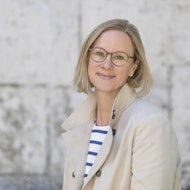The Ages of German Art - Classicism and Romanticism (Online)
By the mid-18th-century, when Rococo art had reached its absolute zenith, a phase of radical artistic transformation begins. The discovery and archaeological exploration of the Roman cities of Pompeii and Herculaneum as well as first grand tours to Greece lead to a renewed interest in the art of Antiquity. The “noble simplicity and quiet grandeur” perceived in this art is experienced as a beneficial and necessary relief from the art of the Baroque and Rococo which is now seen as degenerate. This development is enhanced by the rational philosophy of Enlightenment. Romanticism, however, evolves as a counter-movement to Neo-Classical art. Not reason but emotion and intuition are in great demand. Contemplation of the “primitive” in the natural world, spiritualism, and an appetite for mystery and wonder but also an interest in the long gone past such as the Middle Ages are in the centre of cultural interest. This artistic diversity of the period between roughly 1750 and c. 1820/30 is the focus of the last study day in this series.
Your Tour Includes
- 3 online lectures on The Ages of German Art - Classicism and Romanticism
Itinerary
Please choose your preferred 1 day itinerary
10.00-11.30
12.00-13.30
14.30-16.00


